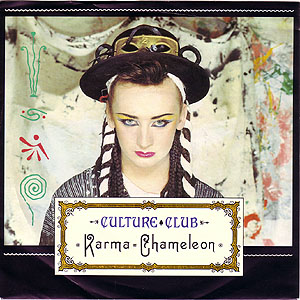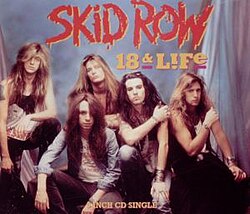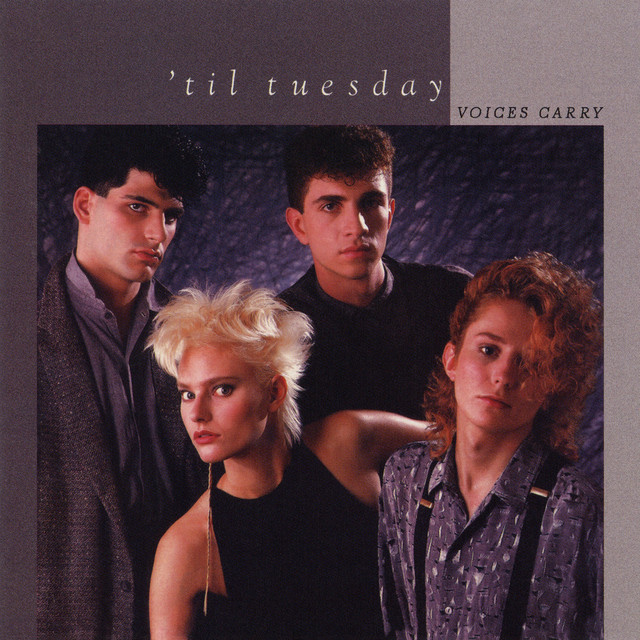 1983 was a year that pulsed with new wave energy, flamboyant fashion, and a sense of unbridled musical experimentation. It was within this vibrant cultural landscape that Culture Club released “Karma Chameleon,” a song that would come to define the band and cement its lead singer, Boy George, as one of the most iconic figures of the decade. With its infectious melody, vivid imagery, and effortless blend of pop, reggae, and new wave, “Karma Chameleon” became more than a chart-topping hit; it became a symbol of the early 1980s’ musical daring, visual boldness, and complex social undertones.
1983 was a year that pulsed with new wave energy, flamboyant fashion, and a sense of unbridled musical experimentation. It was within this vibrant cultural landscape that Culture Club released “Karma Chameleon,” a song that would come to define the band and cement its lead singer, Boy George, as one of the most iconic figures of the decade. With its infectious melody, vivid imagery, and effortless blend of pop, reggae, and new wave, “Karma Chameleon” became more than a chart-topping hit; it became a symbol of the early 1980s’ musical daring, visual boldness, and complex social undertones.
Culture Club: A Band of Colors and Contrasts
Formed in London in 1981, Culture Club was built on contrasts—musically, visually, and culturally. The band’s lineup included Boy George on vocals, Roy Hay on guitar and keyboards, Mikey Craig on bass, and Jon Moss on drums. Each member brought a distinctive musical voice, yet it was Boy George’s androgynous style, wide-ranging vocals, and magnetic charisma that became the focal point of the band’s identity.
Culture Club emerged during a period when British pop was embracing diversity, experimentation, and a visual sensibility that was inseparable from the music itself. MTV had launched just two years earlier, and the visual presentation of a band could be as impactful as the sound. Boy George’s flamboyant costumes, makeup, and persona challenged conventional gender norms, making the band not only a musical phenomenon but also a cultural statement about identity, self-expression, and acceptance.
The Story Behind “Karma Chameleon”
“Karma Chameleon” was co-written by Boy George, Roy Hay, and Jon Moss, and it draws from both personal experience and broader social commentary. The lyrics, which explore themes of inconstancy, deceit, and the consequences of being false to oneself, are couched in metaphor and playful wordplay. Lines such as:
“Karma, karma, karma, karma, karma chameleon
You come and go, you come and go”
capture the transient nature of trust and authenticity, highlighting the risks of superficiality in personal relationships. At the same time, the song’s bright, singable chorus and upbeat rhythm mask a subtle critique of duplicity and the fickleness of human behavior.
Boy George has mentioned in interviews that the song was inspired by observing the behavior of people who change personalities or allegiances to fit circumstances, much like a chameleon changes color. The juxtaposition of serious social observation with a playful musical arrangement is part of what gives the song its lasting appeal.
Musical Composition and Catchy Hooks
Musically, “Karma Chameleon” is an intricate blend of pop, reggae, and new wave. The song opens with a simple, rhythmic chord pattern, immediately establishing a light, danceable groove. This is paired with a melodic bassline from Mikey Craig that adds depth and warmth, grounding the song in a gentle reggae-inflected swing.
The melody itself is deceptively complex. Boy George’s vocal delivery alternates between relaxed, almost conversational verses and a soaring, emotionally charged chorus. This dynamic interplay keeps listeners engaged and ensures that each repetition of the chorus feels fresh rather than formulaic.
The production, handled by Steve Levine, is both polished and vibrant. Layered backing vocals, subtle horn accents, and rhythmic percussion create a rich tapestry of sound that supports the song’s narrative without overwhelming it. The arrangement allows the playful elements to coexist with the deeper, cautionary messages embedded in the lyrics—a balance that few pop songs manage so effectively.
Lyrics and Social Commentary
At its core, “Karma Chameleon” addresses authenticity and integrity in relationships. The song’s lyrics suggest that those who are inconsistent or deceptive—like a chameleon changing colors to suit their surroundings—cannot be trusted and will eventually face consequences, or “karma.” Lines such as:
“I’m a man without conviction
I’m a man who doesn’t know
How to sell a contradiction”
reflect a self-awareness and critique of human weakness, making the song resonate beyond the surface level of pop frivolity.
The use of metaphor allows the song to operate on multiple levels: it’s catchy and accessible for casual listeners while offering deeper insights for those paying attention to the lyrics. This duality contributed to the song’s cross-generational appeal, allowing it to succeed as both a radio-friendly hit and a meaningful cultural statement.
Boy George: Vocal Performance and Persona
Boy George’s vocal performance is central to the song’s success. His expressive tenor navigates the song’s melodic range with ease, infusing both warmth and emotional nuance. He alternates between playful lightness and soulful introspection, creating a sense of narrative and personality that makes the song feel intimate and direct.
Equally important is the persona he projects. Boy George’s androgynous style, playful charisma, and emotional openness invite listeners into the song’s world, blurring the line between music and performance art. His delivery is both personal and universal, allowing audiences to connect with the song on multiple levels—emotionally, rhythmically, and aesthetically.
Visual Impact and the Music Video
The music video for “Karma Chameleon” played a pivotal role in the song’s success. Set against colorful backdrops and featuring vibrant costumes, the video reinforced the band’s identity as one that celebrates diversity, playfulness, and artistic experimentation. The visual spectacle, combined with the song’s infectious melody, made it a staple on MTV and international music channels, increasing its global reach and cementing Culture Club’s place in pop culture history.
The imagery of the video—bright colors, playful storytelling, and Boy George’s flamboyant presentation—enhanced the song’s metaphorical content. Just as the lyrics discuss changing appearances and false personas, the video emphasizes the performative nature of identity, reinforcing the song’s themes in a visually striking way.
Chart Domination and Commercial Success
Karma Chameleon became a phenomenon almost immediately upon release. It topped the charts in the UK, the United States, and multiple other countries, becoming one of the best-selling singles of 1983. The song’s widespread appeal stemmed from its combination of catchy melody, playful rhythm, and universal themes.
Its commercial success also showcased the power of music in the early MTV era, where visual presentation could amplify a song’s impact. Culture Club’s striking aesthetic, combined with the song’s memorable hook, ensured that it became not just a hit, but a cultural touchstone that epitomized the early 1980s.
Cultural Impact and Legacy
Karma Chameleon has endured far beyond its initial success. Its colorful energy, catchy melody, and themes of authenticity continue to resonate with audiences decades after its release. The song has been covered, sampled, and referenced in various media, attesting to its lasting influence on popular culture.
The song also represents a broader cultural moment—the early 1980s—when gender expression, musical experimentation, and cross-genre fusion were being celebrated in mainstream music. Culture Club, and Boy George in particular, challenged societal norms with charisma and creativity, creating a lasting legacy that goes beyond mere chart performance.
Musical Influence and Cross-Genre Appeal
Musically, “Karma Chameleon” has influenced countless pop and new wave artists. Its blend of reggae-inspired rhythms with mainstream pop sensibilities created a template for combining global musical influences with commercial appeal. The song’s production techniques—layered vocals, rich instrumentation, and attention to rhythmic detail—continue to inform contemporary pop music production.
Its ability to bridge genres is another reason for its enduring appeal. While rooted in new wave and pop, the song incorporates elements of reggae, soul, and folk, making it accessible to diverse audiences. This genre-blurring approach helped pave the way for future artists to experiment with hybrid styles without alienating mainstream listeners.
Why “Karma Chameleon” Matters Today
Decades after its release, “Karma Chameleon” remains relevant for its musical innovation, lyrical depth, and cultural significance. Its message about authenticity and the consequences of duplicity resonates in a world where social performance—both online and offline—often masks true identity. The song reminds listeners of the value of integrity and self-awareness, wrapped in an irresistibly catchy pop package.
Musically, it serves as a reminder that pop music can be sophisticated, emotionally resonant, and culturally impactful all at once. Its enduring popularity on streaming platforms, retro radio, and in live performances attests to its timeless appeal.
Final Reflections
Karma Chameleon is more than a catchy pop tune; it is a masterclass in blending melody, rhythm, and social commentary into a song that entertains while engaging the listener on multiple levels. Released in 1983, it captures the spirit of an era defined by experimentation, visual flair, and boundary-pushing artistry.
Boy George’s vocals, the band’s vibrant instrumentation, and the song’s playful yet pointed lyrics create a track that is as meaningful as it is danceable. Its impact on pop music, fashion, and culture underscores the power of music to transcend simple entertainment, becoming a vehicle for expression, identity, and cultural commentary.
Today, Karma Chameleon remains a symbol of the early 1980s’ creative audacity, a reminder that music can be both fun and profound. It is a song that celebrates individuality, warns against inauthenticity, and invites listeners to embrace life with color, rhythm, and confidence. Its lasting influence and continued popularity affirm Culture Club’s place in pop history, and the track itself continues to shine as one of the decade’s most iconic anthems.



